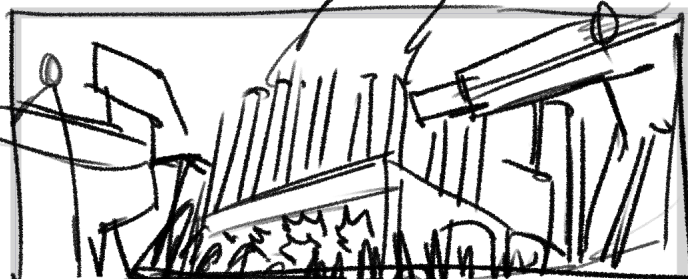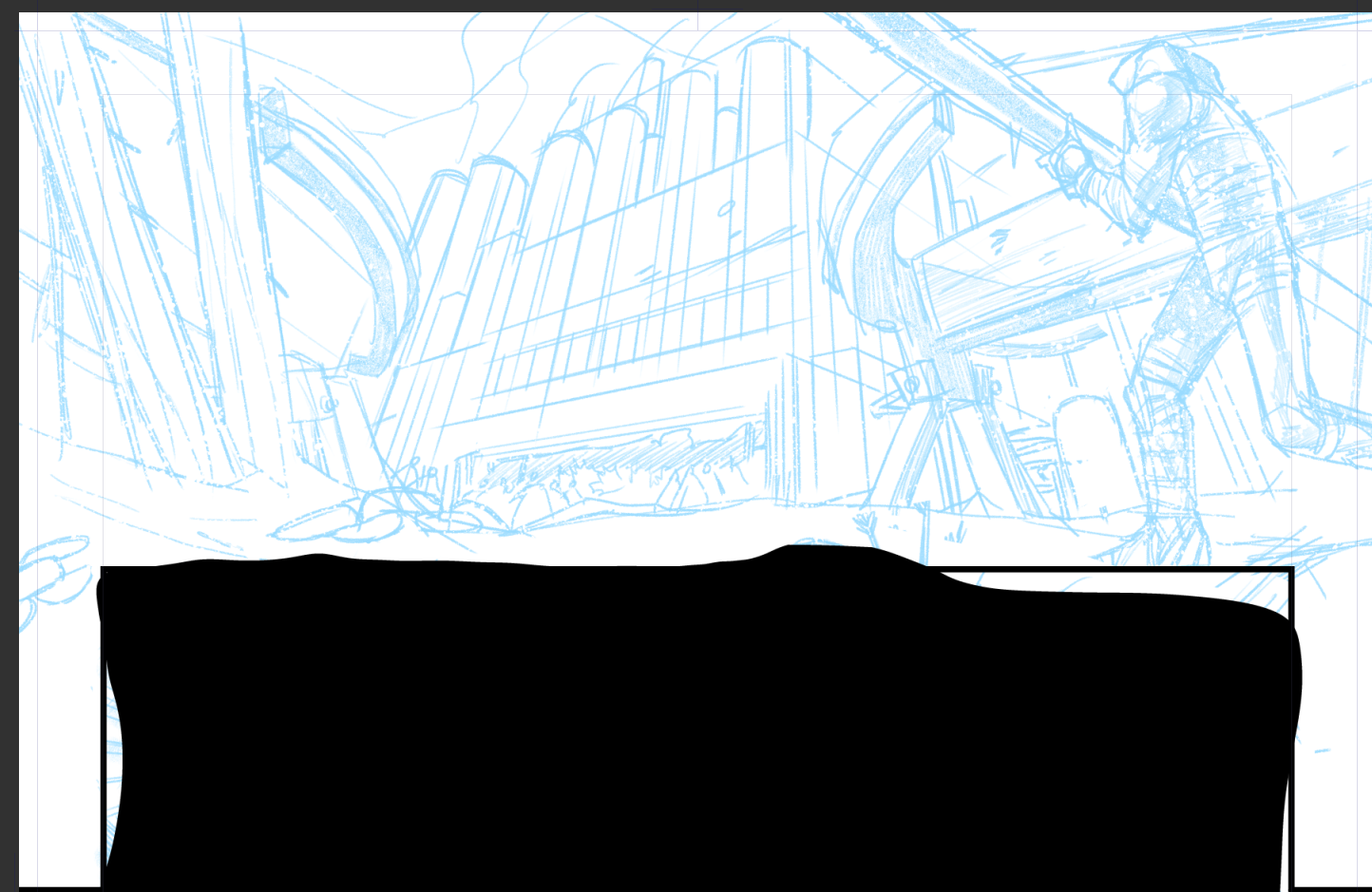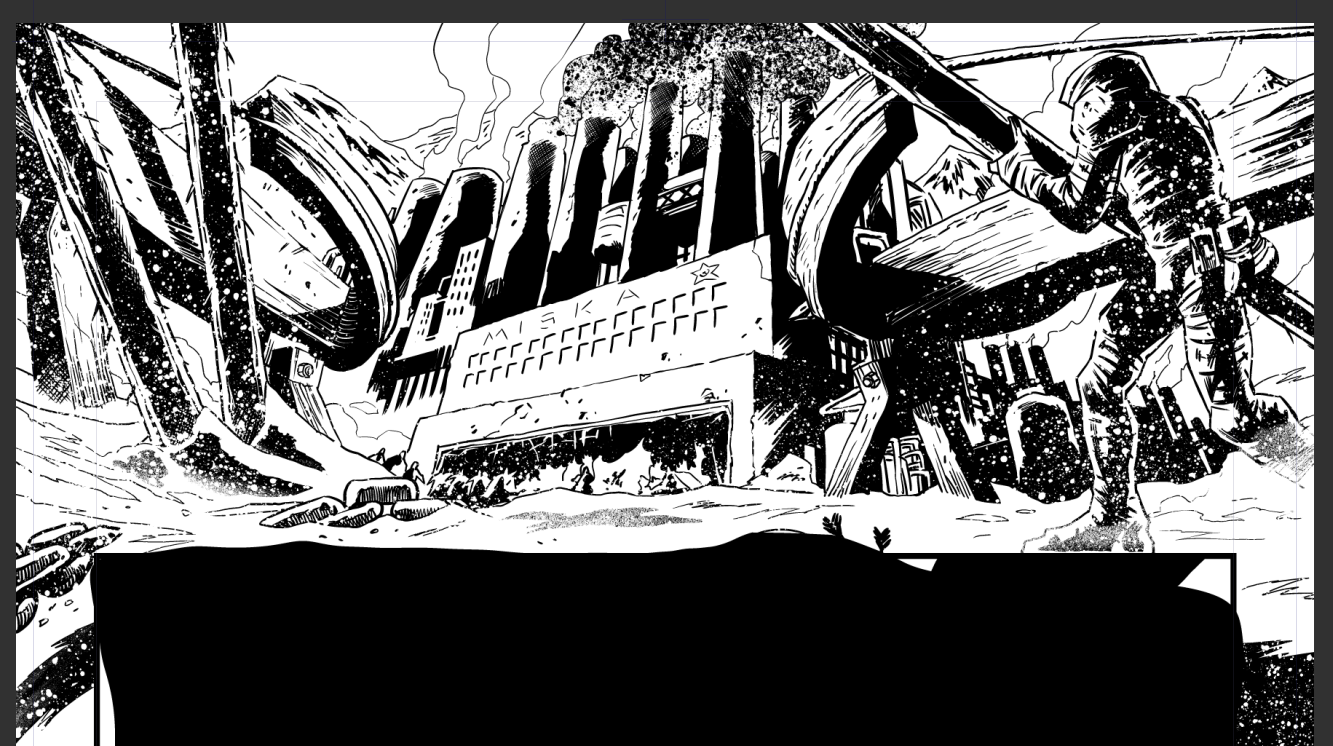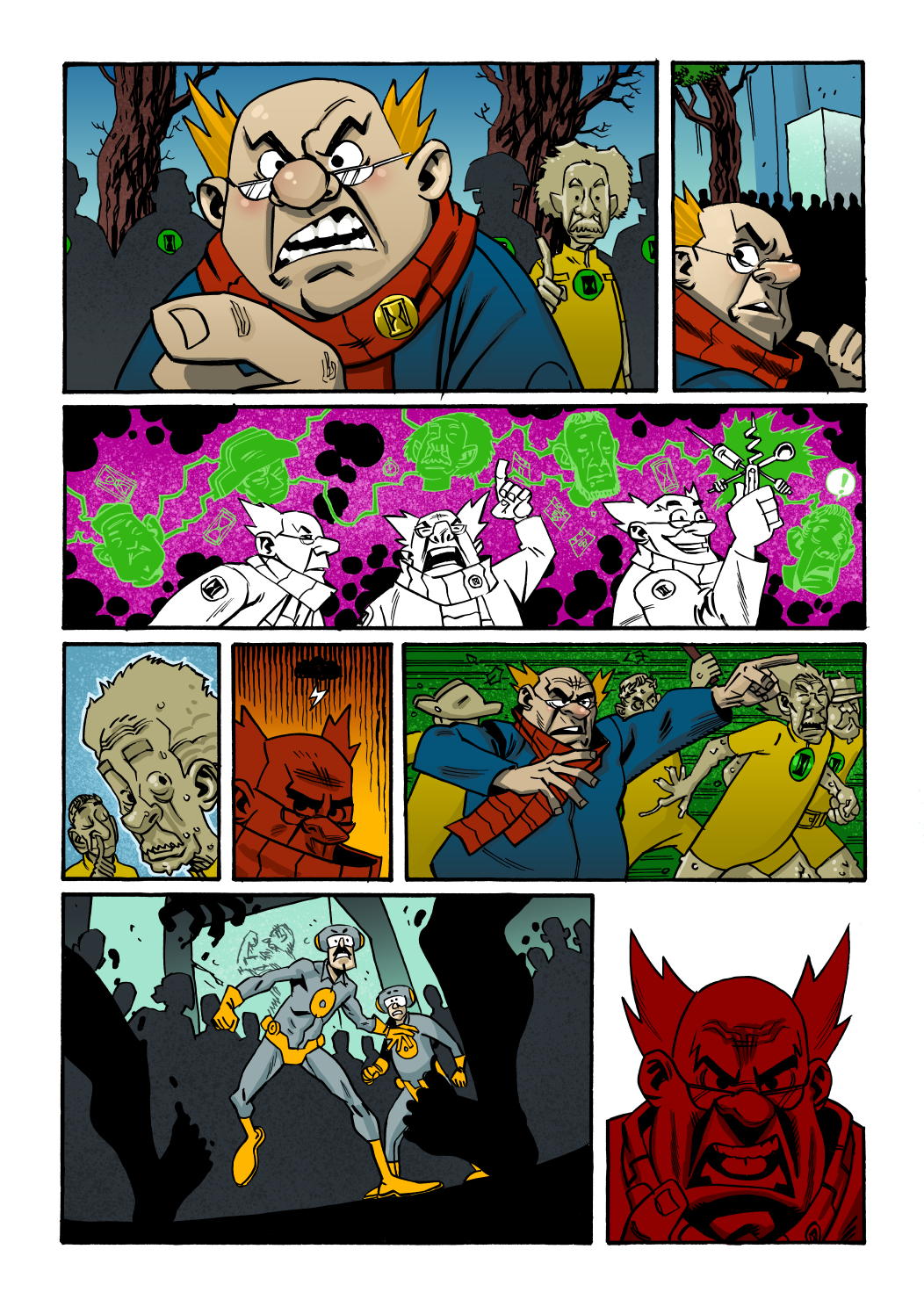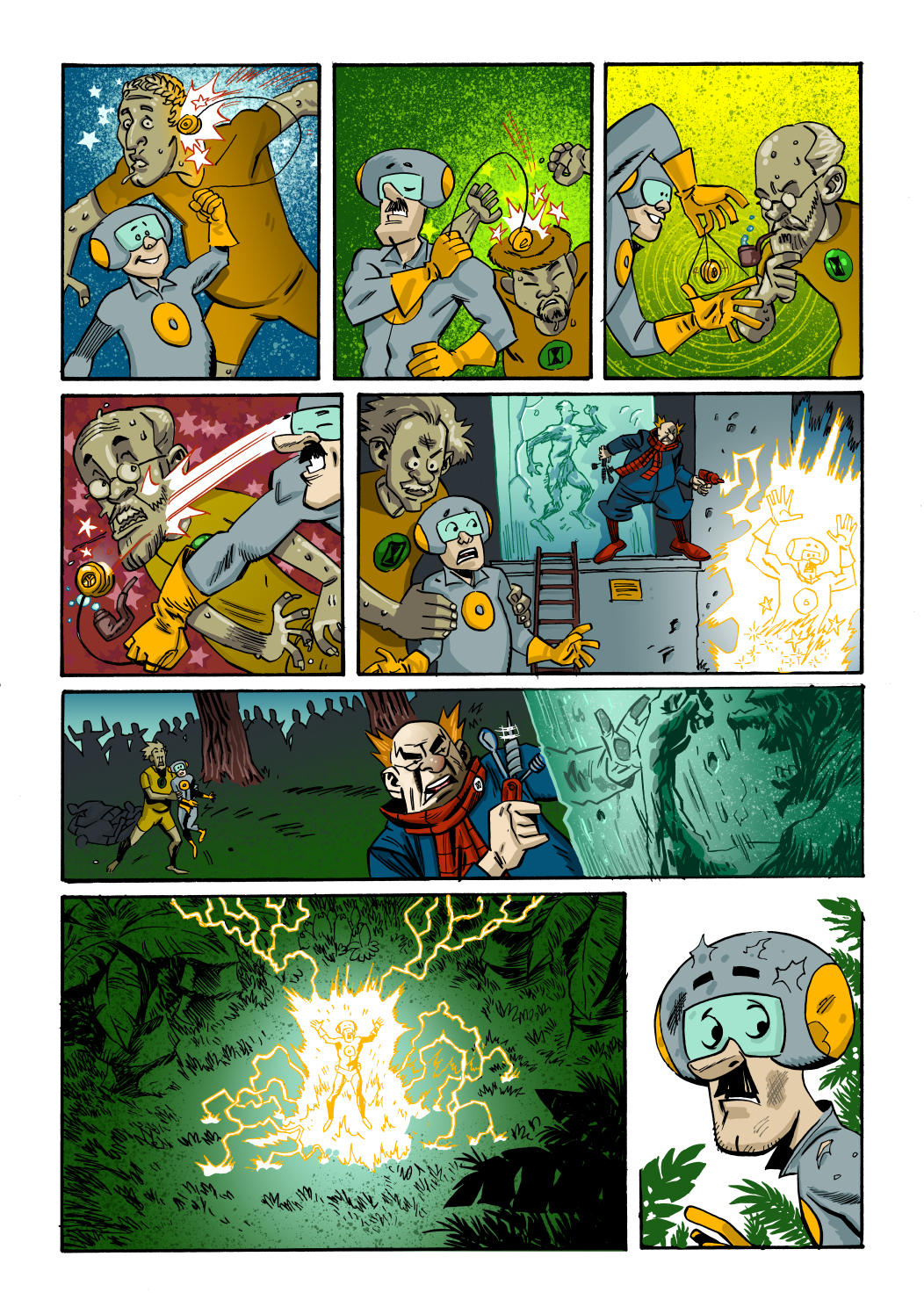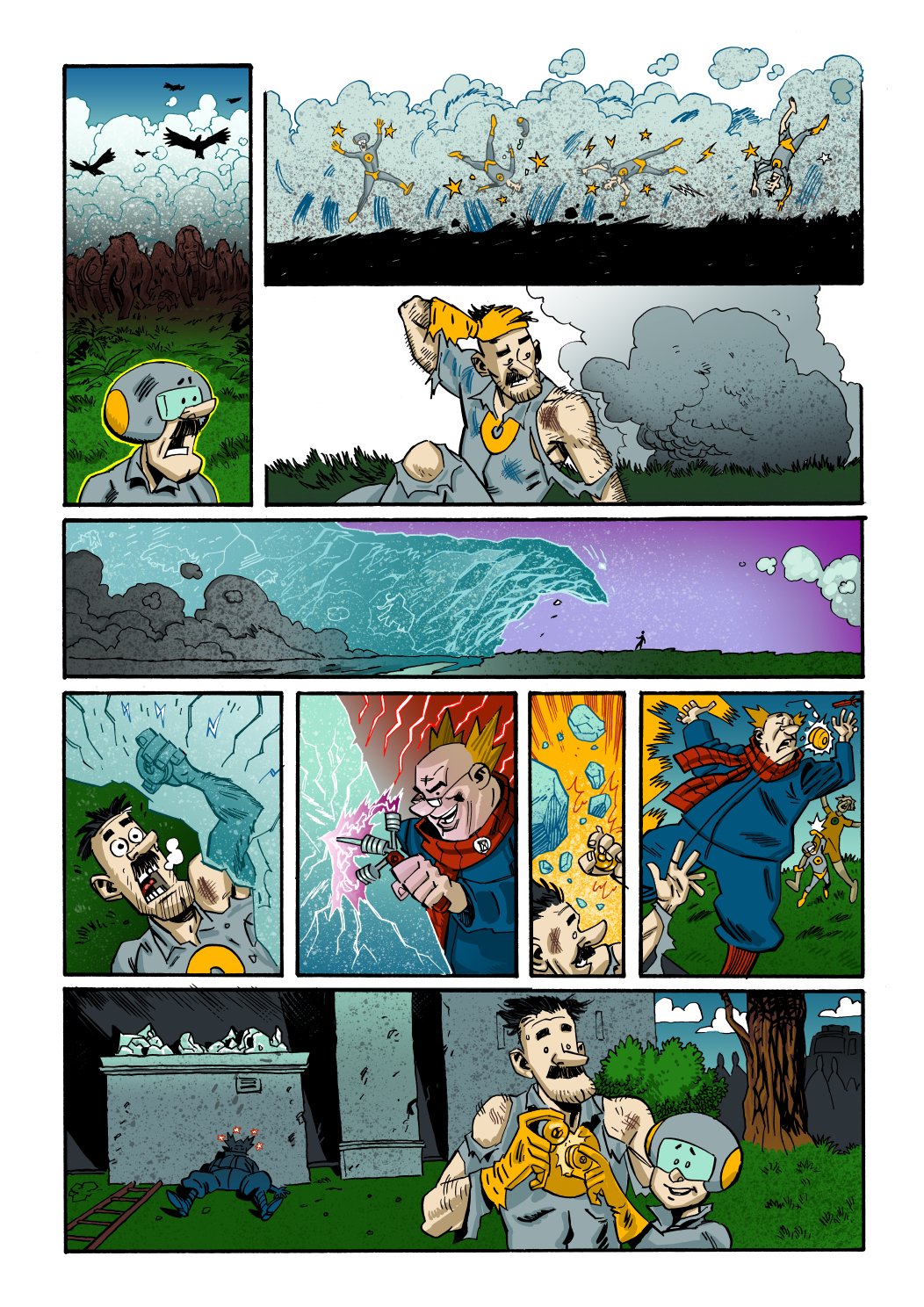So here we go again. Had the first of the six week creating comics class at the Irish writers centre in Dublin. I enjoyed it, hopefully others did too.
Week 1 was about creating stories. Specifically Future Shocks. 2000ad’s short sci fi stories with a twist.
The basic format of a future shock is pretty simple – four pages. One twist (though the more twisty the better). The twist really needs to come out of the story though, no “suddenly they all became aliens!” It helps if it’s an ironic result of the protagonist’s actions.
There are lots of ways to come up with ideas for stories, anything should be able to inspire, the trick is to tease a story out of that inspiration.
During class we used a bunch of words to suggest stories, here’s one such:
The word scar. This suggest a scar in the landscape. From that we talked about a planet that’s ripping itself apart. The visual of a giant planet starting to gape with a scar across its entirety suggested the idea of two factions who believed that that the other side was the cause of this. And what if those sides fought and had a battle, only for the planet to fully split because it’s giving birth to giant indifferent God-creature.
(Look, it was made up on the hoof).
We talked about theme, and figuring out what the theme of the story is/was – is the story about how God is indifferent to suffering, or is the story about how two sides can disagree over stuff that’s utterly immaterial. (Trump leading on faction, Ian Paisley the other suggested some nice visual humour – always good in 2000ad)
Irony, humour are very important to future shocks.
We then burned through a half a dozen different ideas for stories, taking each and teasing out bits that felt unimportant – is this really a sci-fi story? If that laser was a Tommy Gun would it change anything at all?
Identify whether you’ve written a future shock (sci fi story with twist) or a horror story or time twister. Depending on what you’ve written you’ve got to go back and start pulling it more into that shape.
The four page format of a future shock is interesting too. Each page will have, roughly, 4-5 panels, and the last panel of each page will be a little cliff hanger (or a twist or at least something to hook the reader, a reason for them to turn the page)
Broadly speaking the four pages become:
Page 1/ Setup
Page 2/establish the stakes/escalate
Page 3/escalate
Page 4/ironic twist
Using that four page format to fill the sorry out – if the idea isn’t big enough, expand it, if it’s too large start to figure out how to cut it short.
We don’t have a word count, but we have a page count.
We want to build world, introduce characters we’re interested in and make sure our ideas have visual hooks – a disease that leaves characters with sense of melancholic ennui isn’t as good as a disease that gives characters giant spines poking randomly from their bodies.
One of the suggested story ideas came from “witness”
A child taken in to an interrogation room to be interrogated about his parents murder,only for it to be revealed the child to reveal he’s the murderer and kills the cops.
We taking this idea, visually it’s weak – and for a horror story (which is it’s closes fit) it’s not really horrific.
So what if the child is actually some sort of monster? We get to see the child describing the monster eating the parents and then the cops are killed by the monster.
Better. But still a little obvious.
But what if, instead, the make the good cop the monster. Bad cop interrogates the child, child describes seeing the monster. Bad cop isn’t having any of this shit. Good cop turns up to placate the child. Good cop leaves. Bad cop turns into monster eats child (or, at the very least we see bad cop running out, saying the 10 year old just had a heart attack)
Ramp up and ramp up again. Figure out your theme and embed it in the story. If it’s horror what’s the most horrific it can be.
Anyway, there was more, but that was week 1.
Next week script writing!


